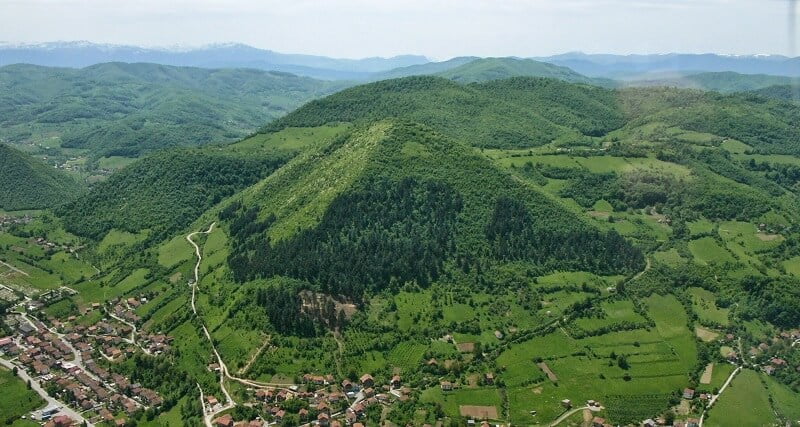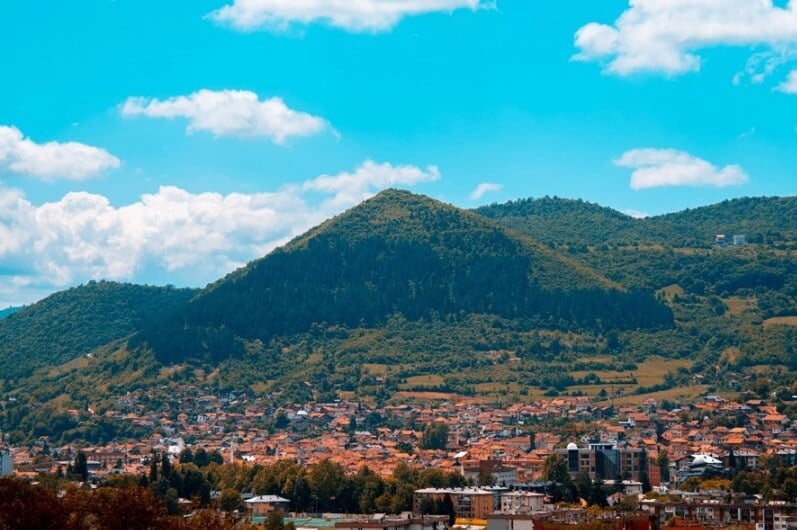
Are There Hidden Pyramids In Bosnia?
An amateur archaeologist says he’s discovered the world’s oldest pyramids in the Balkans. But many experts remain dubious...
By Jim H. | Ancient Mysteries
Pyramids are everywhere across the globe. The Egyptians and the Mesoamericans of Teotihuacan, the Maya and the Hindu temples of India are all similar in form and construction.
Solidly built of stone, they are built to last and these massive constructions are often the first visible clue to the existence of an ancient culture. Uruk in Mesopotamia contains a massive stepped pyramid 2,000 years older than the great pyramids of Giza, the first clue to the existence of the great Sumerian city rising from the arid plain.
But pyramids are sometimes not so easy to spot. Vegetation obscured the Maya pyramids at Tikal for centuries, and many more structures may be hidden under later detritus, soil and vegetation. One such intriguing site can be found near the Bosnian town of Visoko.
It has been claimed that the hills near the town, which lies about 35 km (22 miles) north of the capital of Sarajevo, are in fact a complex of pyramids. Not only that, they are the largest pyramids ever built by an ancient culture, one whose existence is a complete mystery.
Claims of Semir Osmanagić
These claims have been popularized by Semir Osmanagić, who is a Bosnian-American businessman. The series of hills certainly appear to resemble pyramids, being symmetrical and rising suddenly from the valley floor with a seeming absence of visibly associated geology. They are outliers in the landscape.
In October 2005, Osmanagić initiated a media campaign in order to promote these pyramids, and the ancient lost culture who constructed them. He even suggested that the pyramids were built by the Illyrians, who were believed to live in the region from 12,000 BC to 500 BC.
In the year 2017, he made additional claims that the structures dated back to 34,000 years, far older than all known pyramids elsewhere. In order to support his claims, he said that he had found what he called “standing waves” on the top of the largest hill.

He had himself given different names to the hills. He named one of the largest hills the “Pyramid of the Moon” and another, known locally as Visočica, as the “Pyramid of the Sun” in apparent tribute to the great pyramids of Mesoamerica at Teotihuacan.
The Bosnian Pyramid of the Sun has a height of about 220 m (722 feet), remarkably close to the length of one side of the Teotihuacan pyramid. Other supposed structures in the area received more fanciful names, such as the pyramid of the “Earth”, “Love” and the “Dragon”.
Evidence to Support the Claims?
The local authorities funded excavations made by Semir Osmanagić, which started almost as soon as the claims were made. They also authorized visits by schoolchildren with their guides to the pyramids, and the site quickly became a popular tourist destination.
As per Osmanagić, a team of international archaeologists from Ireland, Australia, the United Kingdom, Austria, and Slovenia started digging the site in 2006. However, a number of archaeologists whom he had named disagreed with his claims and said that they were never involved in the digging of the site.
Osmanagić even claimed that the hill direction revealed an alignment supporting ancient human cosmology. According to him, the sides of the pyramids were oriented towards the cardinal points, and he claimed that such an orientation was not possible through natural processes.
When pressed to provide evidence for his claims, he said that his research work was centred on radar detection, satellite photography, and thermal analysis. He and his team claimed that, as per their research, the hills were conclusively proven to be not of natural origin.
During his excavations, he also discovered blocks that he believed could be a part of the man-made outer surface. Ancient, indecipherable script was found on some of the blocks, pointing conclusively to a man-made origin.
Flatirons
However, these claims made by Osmanagić have been roundly rejected by the scientific community. According to scientists, the hills are not actually pyramids, rather are natural structures called flatirons.
The hills certainly look similar to the pyramids. However, in reality, they are a well-known geological feature, formed from erosion when a steeply angled hard layer of rock sits above softer layers below. Flatirons can be found in many different places around the globe, from Ethiopia to Russia.

A number of qualified archaeologists and scientists have discarded the claims made by Osmanagić that the hills in Bosnia are pyramids. Curtis Runnels of Boston University, which is an American expert on prehistoric Greece and the Balkans, said that the inhabitants Osmanagić credits with constructing the pyramids were actually a primitive people, incapable of building such large structures.
The population size of the people in the region was far too small to support a megaproject of this size, and there is no evidence of the development of the technology or any cultural support for the building of such pyramids. Put simply, they did not have the right skills and tools in order to engage in the building of monumental architecture.
After visiting the hills in Bosnia, Anthony Harding, a British professor and president of the European Association of Archaeologists, stated that the theories of Osmanagić were absurd and wacky. He also voiced his concern about the fact that Bosnia’s government was humouring Osmanagić in his investigations, and not responding appropriately to preserve the rich heritage of the country.
A geological team of the University of Tuzla was commissioned by the Bosnian Pyramid of the Sun Foundation to carry out an investigation of the Visočica hill. On the 8th of May 2006, the members of the team presented their findings via a press conference.
According to Sejfudin Vrabac from the University of Tuzla, the hills are natural geological formations. They were made up of clastic sediments of different thicknesses and layered sediments. The shape of the hills was a result of ancient tectonic activity combined with millennia of erosion.
The so-called pyramids were found to be entirely made up of the same matters as the mountains of the region, which included layers of clay, sandstone, and conglomerate.
Masonry Blocks?
In the year 2006, Aly Abdullah Barakat, a self-styled geologist who claimed to also be an expert on pyramids, investigated a number of blocks at the hills. In his first look, he stated that they were indeed the evidence of ancient pyramids.

In a geological report he published on 7th of November 2007, he claimed that nature could not produce the pyramid shape of the hills. His hypothesis was that humans may have shaped the natural hills into pyramids.
However, later, the same blocks were studied by Robert Schoch, an American geologist. Schoch concluded that the structure was a common natural formations, and not even an unusual one.
But what if the writing visible on the blocks, inscriptions made by the hand of an unknown, lost civilization? Schoch’s review concluded that the ancient inscriptions on the site were actually modern forgeries added to the natural formations to make then appear man-made.
Who was responsible for the forgery is not known, but Osmanagić has elsewhere been criticized for his “excavations” actually working to reshape the hills, so that they appear more symmetrical and pyramid-like. Could the inscriptions come from him also?
In spite of so much evidence that the hills were not pyramids, Osmanagić
This article was originally published by Ancient Mysteries.
